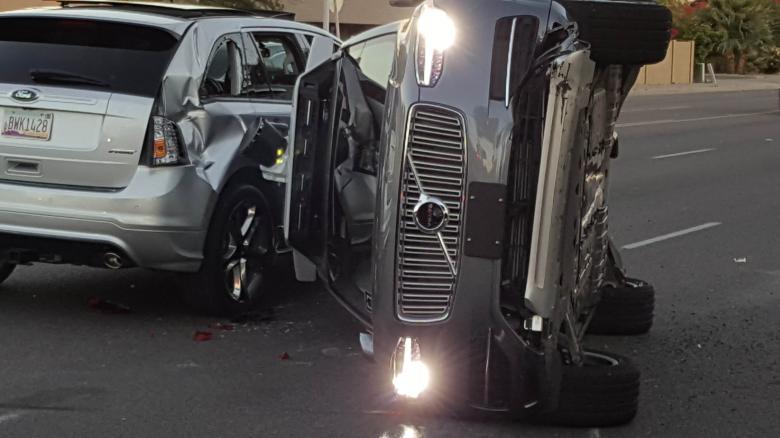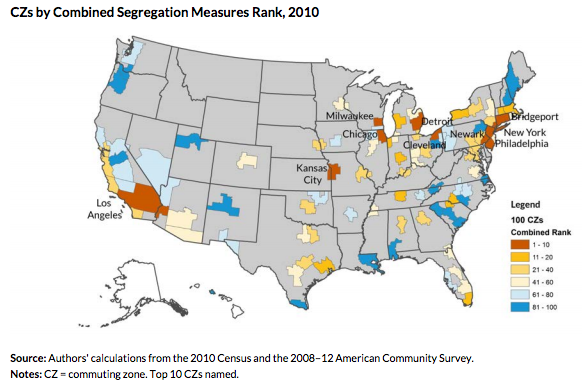What City Observatory did this week
1. 13 propositions about autonomous vehicles. Despite occasional setbacks–like last week’s crash of an Uber self-driving car in Phoenix–it looks increasingly likely that autonomous vehicles will play an important role in urban transportation in the not-too-distant future. There’s a lot to ponder about what effects they might have on cities, on land use patterns, on transportation and public finance. To help fuel your thinking, we outline 13 propositions about the character of travel demand, the costs of new technology, and the kinds of public policies that will shape its implementation. There’s a much longer conversation to be had here, but we invite your reactions to our initial thoughts.

2. Breaking Bad: Why breaking up big cities would hurt America. New York Times columnist Russ Douthat thinks that big, liberal cities have garnered an unfair monopoly on the nation’s economic assets (like universities and productive industries) and that we’d be better off if we dispersed these resources to the rest of the country. In our view, this fundamentally misunderstands the economic role cities play; they actually foster the entrepreneurship, knowledge creation, and productivity that drive the US economy. Making cities smaller would actually reduce national income and productivity.
3. The cost of segregation. Its widely acknowledged that racial and economic segregation are unfair, unwise and at odds with our democratic values, but a new report from the Urban Institute shows that segregation imposes its own significant economic costs. This statistical study shows that higher rates of segregation are associated with lower earnings for African Americans, lower educational attainment and higher crime. In just one city–Chicago–simply reducing segregation from its current high level to the level found in the typical metro area would be expected increase the average income of African Americans by $3,000 annually and cut homicides by nearly a third.

4. Revisiting the cappuccino congestion index. Looking to get the jump on April Fool’s Day, we’ve dusted off our cappuccino congestion index, which turns a traffic engineer’s eye on those annoying lines that we have to wait in to get our daily coffee fix. If you apply the same tools and assumptions to assess the “cost of congestion” at your neighborhood coffee house that is commonly asserted to apply to roads, you could conclude that we waste $4 billion annually waiting in line for coffee. But the fact that Starbucks (and all its competitors) don’t build enough stores, buy enough espresso machines, and hire enough baristas that we never have to wait in line is a really good indication that the cost of added capacity is much larger than the supposed costs in time lost. The same conclusion applies to roads.
Must read
Trump and Clinton Counties compared. Brookings demographer Bill Frey has a terrific statistical profile comparing the differences in age, education, race, ethnicity, and place of birth between counties that voted for Hillary Clinton as opposed to Donald Trump in the 2016 election. Trump won more counties, but Clinton won the more populous ones, and the population of Clinton Counties (177 million) was vastly greater than Trump counties (146 million). Counties which voted for Trump were older, and whiter. Counties that voted for Clinton were better educated and had more immigrants. Just imagine if we apportioned electoral votes according to county population, rather than by state.
A road to nowhere. Building more roads and bridges is a favorite old-timey elixir for rural economic development, and there’s a born-again enthusiasm for thinking that one more road will somehow turn around a struggling town. But as Tony Dutzik patiently explains at The Frontier Group, highways can’t heal what ails the rustbelt. Not only do they fail to address the root problems of economic decline, but also add their own negative effects (often undercutting the viability of existing city centers), and necessarily consume a huge amount of resources that could be better used elsewhere.
Making roads more dangerous to keep us safe. Its a perennial battle: traffic engineers and fire chiefs are telling us that wider roads will make us safer. Wider travel lanes mean more space between cars and (theoretically) should reduce collisions. Wider roads mean giant fire engines can roar faster to emergencies, with that time savings saving lives. This drama is playing out, once again, in Celebration, Florida the new urbanist model town. The trouble is, as Steve Mouzon reports at CNU, wider roads encourage cars to travel faster, making roads more dangerous. That, and lopping off trees and removing on-street parking makes pedestrians feel even more vulnerable so they walk less. Less walking and faster cars turns out to more than erase suppose the health and safety advantages of wider roads.
New ideas
Segregation. See this week’s post on the Urban Institute’s new report, the Cost of Segregation, (above). Its a comprehensive statistical analysis of economic and racial/ethnic segregation in the nation’s 100 largest metro areas, with detailed data for 1990, 2000 and 2010.
City Observatory in the news
In an article entitled “This is the start of the retail store reckoning,” Forbes cites our recent commentary looking at which metropolitan areas are most over-stored and are likely to see a decline in retail employment as that sector continues to restructure.
Milwaukee Sentinel Journal featured research findings from our study of concentrated poverty, Lost in Place, in their article “An intractable problem,” looking at economic restructuring and the persistence of poverty in Milwaukee.

